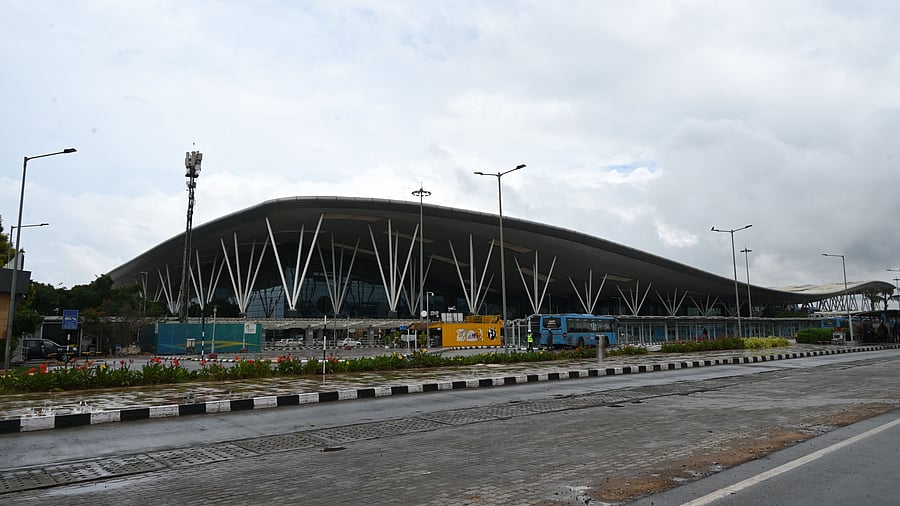
The Kempegowda International Airport in Bengaluru.
Credit: DH Photo
Bengaluru: It provides accurate lateral and vertical guidance to pilots, ensuring a safe and aligned descent to the runway.
The key components of CAT III, ILS include a localiser, a glide path and distance measuring equipment. While the localiser transmits signals that help align the aircraft with the runway’s centreline, the glider path ensures the aircraft descends at the correct angle, usually around 3°.
“It will be especially useful in foggy conditions, during January and December. However, the pilots have to first be trained to use the system. As the procedure is quite expensive, not many Indian airlines end up training the pilots,” he added. “This advanced system is a significant enhancement to our airport operations, allowing for improved accuracy and safety, especially during low visibility conditions,” shared a BIAL spokesperson.
Delayed procedure
Despite the north runway getting all the necessary approvals for CAT III, ILS, it will continue to operate under CAT I for the foreseeable future, as the Bengaluru International Airport Ltd (BIAL) is yet to upgrade the necessary infrastructure to accommodate the ILS, said Anbarasu. “This includes a list of infrastructural amenities like the runway markings and lights, among other things. Till this is completed, we will be operating under CAT I,” he added. According to sources, BIAL plans to start the upgradation process soon.
The north runway of KIA was scheduled to be CAT III enabled in May.
“It is quite a lengthy process. After installation, we had to develop flight procedures, and these then had to be verified by a few airlines. Their observations are considered, and errors rectified. After all this, we get approvals from DGCA. Post this, we have to publish a report on the Aeronautical Information Publication, where it will be coded for the flight management system. This step alone requires 50 days,” he explained.